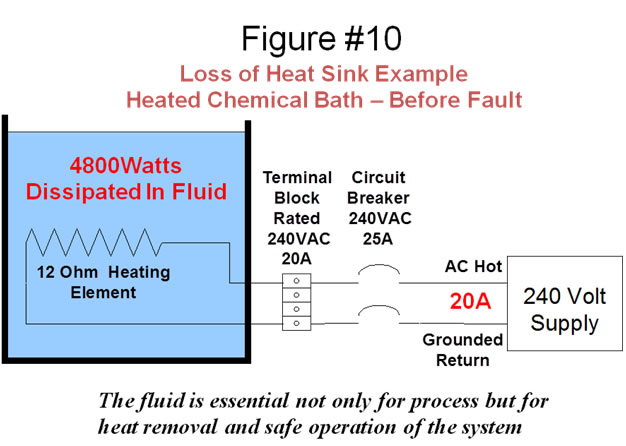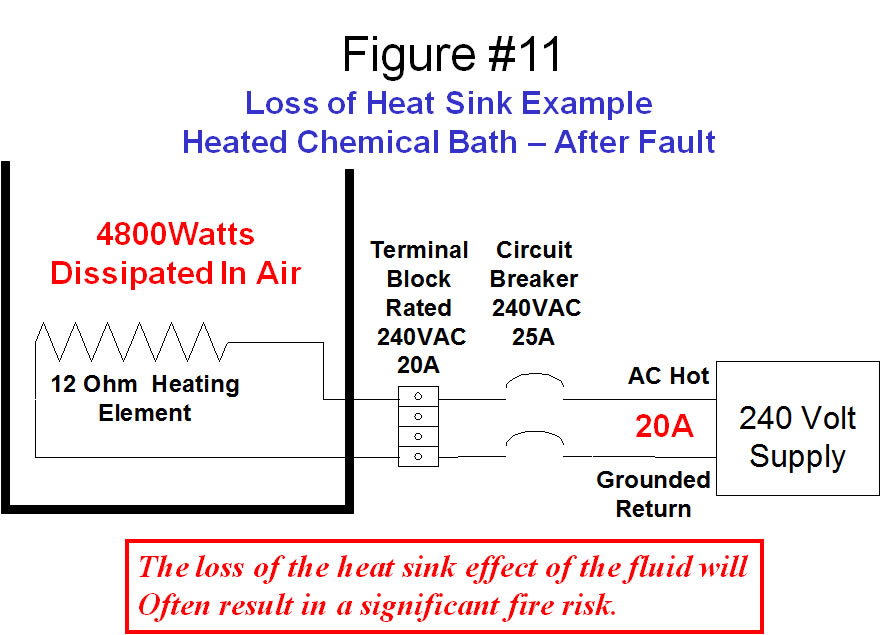Basic Electrical Safety
Fire Due to Loss of Heat Dissipation
The loss of a system’s ability to remove heat is another type of fault that can lead to a fire. One classic problem that has occurred in the semiconductor industry is associated with heated chemical baths. Figure #10 shows a simple design of a heated chemical bath. This system was designed so that the fluid is heated by the 4800 watt heater. This was the intent of the designer. However, there is also a latent function associated with this design. The fluid provides a heat sink for the heater. It removes thermal energy away from the heater. Loss of the fluid means that the heater will lose its heat sink, and the design of the system will probably not be able to safely dissipate the heat generated by the heater without the fluid. Figure #11 shows this system when this fault condition has occurred. This problem is often exacerbated in the semiconductor industry by the fact that these baths are usually constructed out of plastics that can be a good source of fuel for a fire. The solution to this type of problem is often level sensors and over- temperature sensors that are not fluid dependent for their function.

